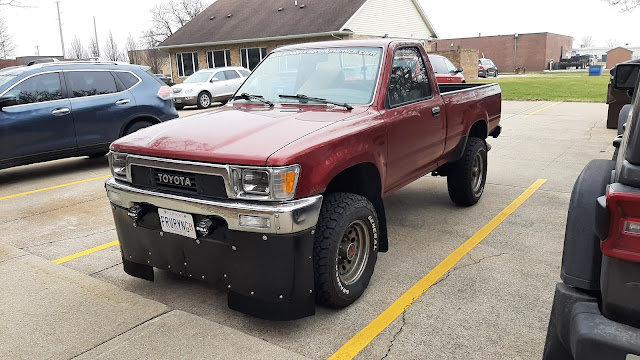Optimizing Aerodynamics of a Truck: Part 4
So far, I’ve lowered the aerodynamic drag of my 1991 Toyota
Hilux by removing its mirrors, blocking part of the cooling air opening, and fitting a large front air dam. Together, these
reduce drag by more than 10%--which means I’m about halfway to my goal of
cutting the drag of this truck by 20% or more.
Moving on from the front surfaces, I thought I would trial
some modifications to the airflow around the wheels next.
Keep It Simple
Right off the bat, I have a conundrum. The front wheel
housings have a metal inner fender and a narrow plastic cover which seals the
gap between inner and outer fenders. But in front of the tires, there are
effectively no wheel housings; it’s open to the bumper, stock valance, and now
air dam. According to various textbooks, wheel drag is
typically reduced when wheels are enclosed in housings, with drag decreasing
the smaller the ratio of the wheel housing volume to wheel volume. This may or may
not hold true on my truck; I have no way of knowing without testing it. But to
build a cardboard mock-up wheel housing would be difficult, as there is very little
structure I could even tape cardboard to:
 |
| The corn is as high as a...horse's eye, maybe? |
 |
| I've had multiple farmers over the last few months ask me what the hell I'm doing. |
|
Configuration |
Speed |
% Change |
% Change,
corrected |
|
standard |
94 kph |
0.0% |
0.0% |
|
+front dams |
96 kph |
-4.3% |
-3.8% |
|
+front dams,
rear covers |
96 kph |
-4.3% |
-3.8% |
|
+front dams,
front covers |
97 kph |
-6.5% |
-5.7% |
|
+front dams, all
covers |
98 kph |
-8.7% |
-7.6% |







Comments
Post a Comment